Knock, knock, knock. I stop editing video and take off my headphones.
Knock, knock, knock, knock, knock. “Well that’s strange,” I say to myself looking out the window. “I don’t see anyone.”
Knock, knock, knock. I push my chair away from my desk, stand up and leave my office.
My workspace is situated at the front of my house near the entry door. There are windows on most of the walls so I can easily see when anyone approaches my porch. Comes in handy when the guy in brown driving the brown truck delivers packages. But I’m not expecting anything, there’s no brown truck at my curb and there’s no one on my porch.
There’s that incessant knock again.
I yank open the front door, look out then step out turning back toward my own house. That’s when movement to my right catches my eye. It’s a flicker, the source of the knock, and now it’s fleeing like one of the neighbor kids pranking a doorbell ditch. The bird does its funny bounce-float fly in retreat but doesn’t go far, moving only from my son’s bedroom wall above my office to my neighbor’s leafless tree across the street. It’ll return when I retreat.
“If I were a flicker, I would look at houses as big trees,” says Chris Anderson, Washington Department of Fish and Wildlife biologist. “Sometimes they try to excavate and go after insects, but they also use structures because they make them louder in urban environments that don’t have a lot of dead trees.”
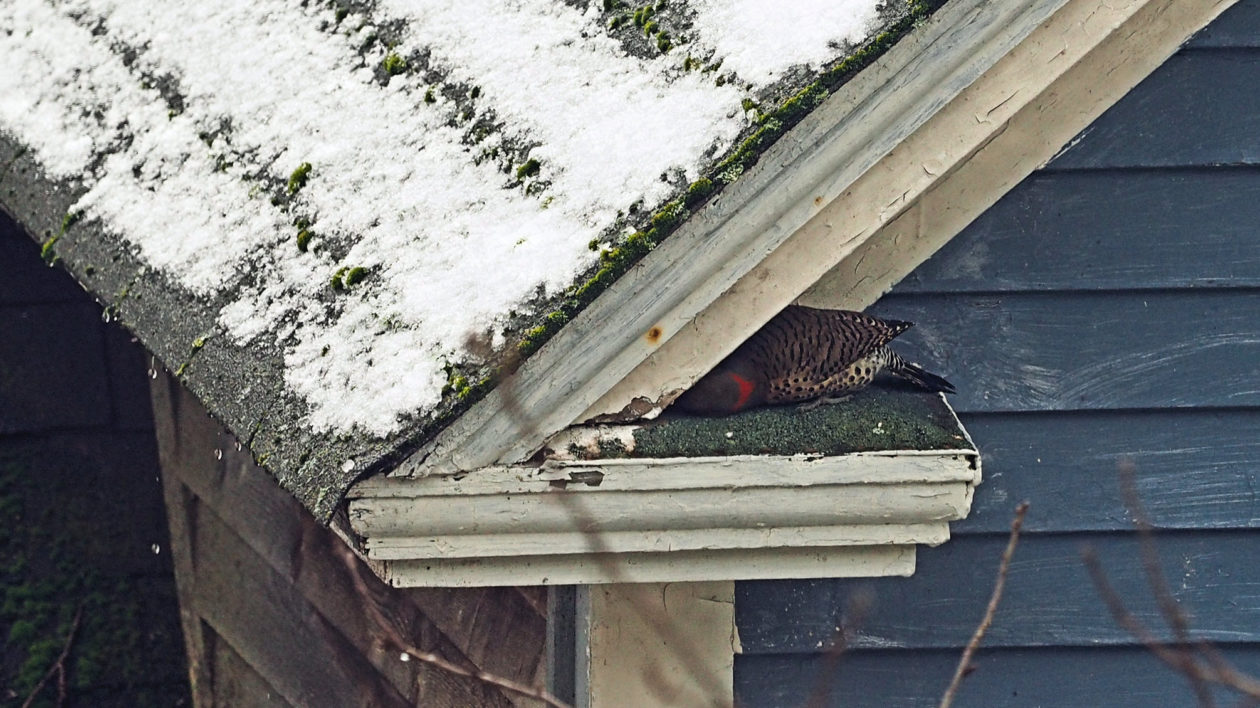
Why Flickers Knock on Your House
Northern flickers, also known as harry-wickets, are the most widespread woodpecker in North America. They used to be classified as red-shafted flickers in the West and yellow-shafted flickers in the East, but the ranges of the two overlap and they cross breed so now they’re all classified as northern flickers.
The origin of the ‘shafted’ identification is inspired by flashy bars of color under brown speckled wings that reveal when the bird with the black-barred back and dotted belly flies. Around my Idaho home, I often see brilliant red-orange shafts, but never yellow.
They knock, or drum, with their beaks for two reasons.
The first reason is food. I’ve seen flickers perched sideways on the trunk of the large, commanding willow tree in my backyard. They have long, strong toes with curved nails that grab bark so their stance looks like they’re defying gravity.
They also have stiff tail feathers propping them up as they poke around, climb and knock. They’re probing for edible bugs in the bark.
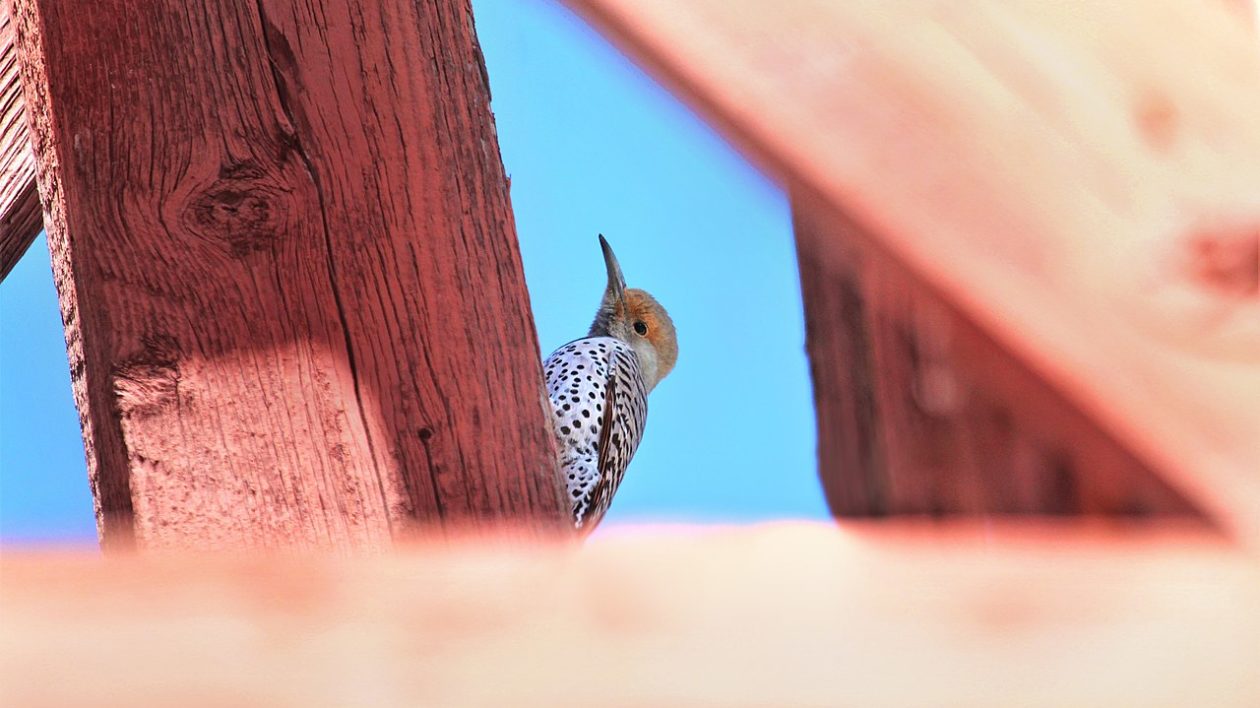
My house is stucco and siding, no wood, but flickers knock it anyway. There are crevices for insects hiding from winter where pane meets wall and trim meets roof. Be it bark or building, flickers knock to shake bugs loose. Hollow, which I’m sure many crannies behind stucco are, is what they seek.
They knock the hollow area until they see, or hear, bugs move. Then they chisel until they catch a meal or they’re spooked away, whichever comes first. That’s one reason for the ruckus. The other reason is territorial.
“They claim an area and drum in the early part of breeding season,” Anderson says. “It’s a territorial thing and they can make sound louder and travel farther by hitting the hollow spot on a house.”
Beating of the beak explained. Now on to the rolling bit.
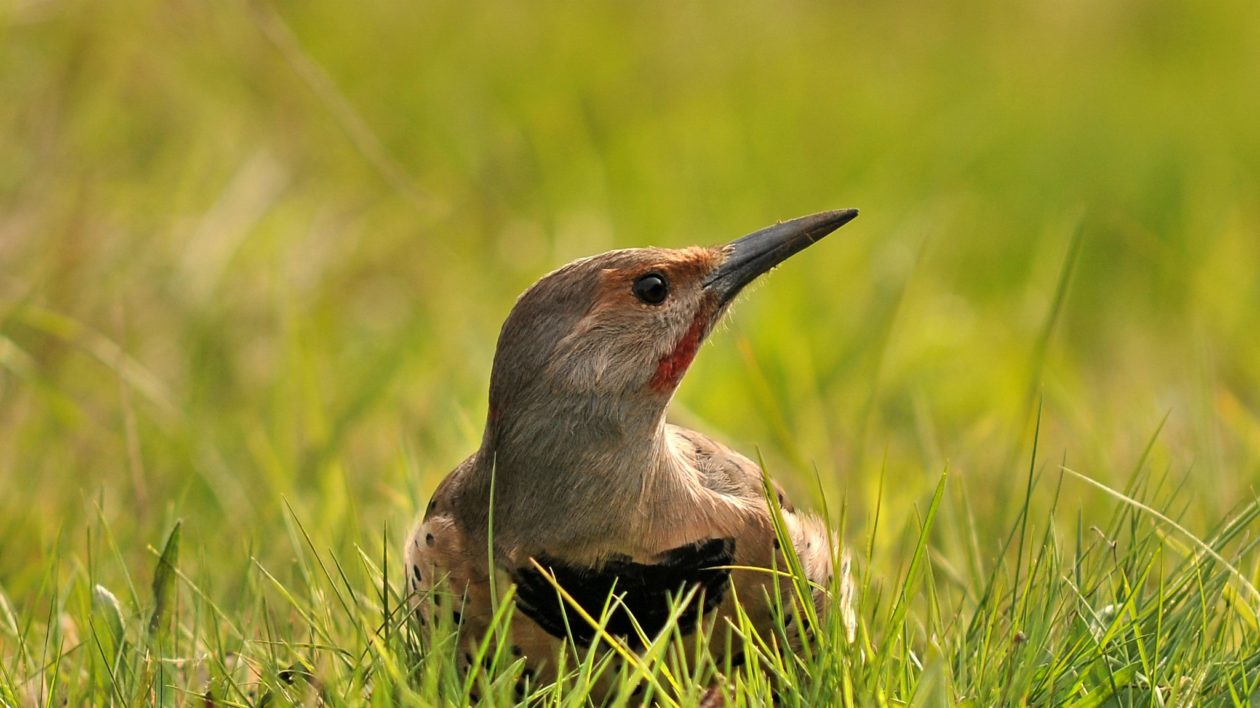
Why Flickers Roll in Your Yard
Woodpeckers have long tongues. Flickers have longer than long, two inches more than other species, and their tongue is sticky. It’s an ant trap according to American Bird Conservancy. Flickers lay down in your yard, stick their tongue out and breakfast literally sticks.
They love ants so they’ve evolved as a tree and ground woodpecker. They love ants so much, they do more than eat them. They roll in them (passive anting) and wear them (active anting). It’s high fashion in the feather world.
“They get one, they crush it and rub it on their body. They preen with it by running it through their feathers,” Anderson says. “When I see them do it, they aren’t quick one and done. They’re spending a few minutes preening only in this case they’re using an ant in their beak.”
To each its own. Greater sandhill cranes fling grass and preen with mud, flickers with ants. Ants contain formic acid. Formic acid reduces parasites on bird bodies. Wearing ants is fashionable because feathers look better and functional because feathers fly better.
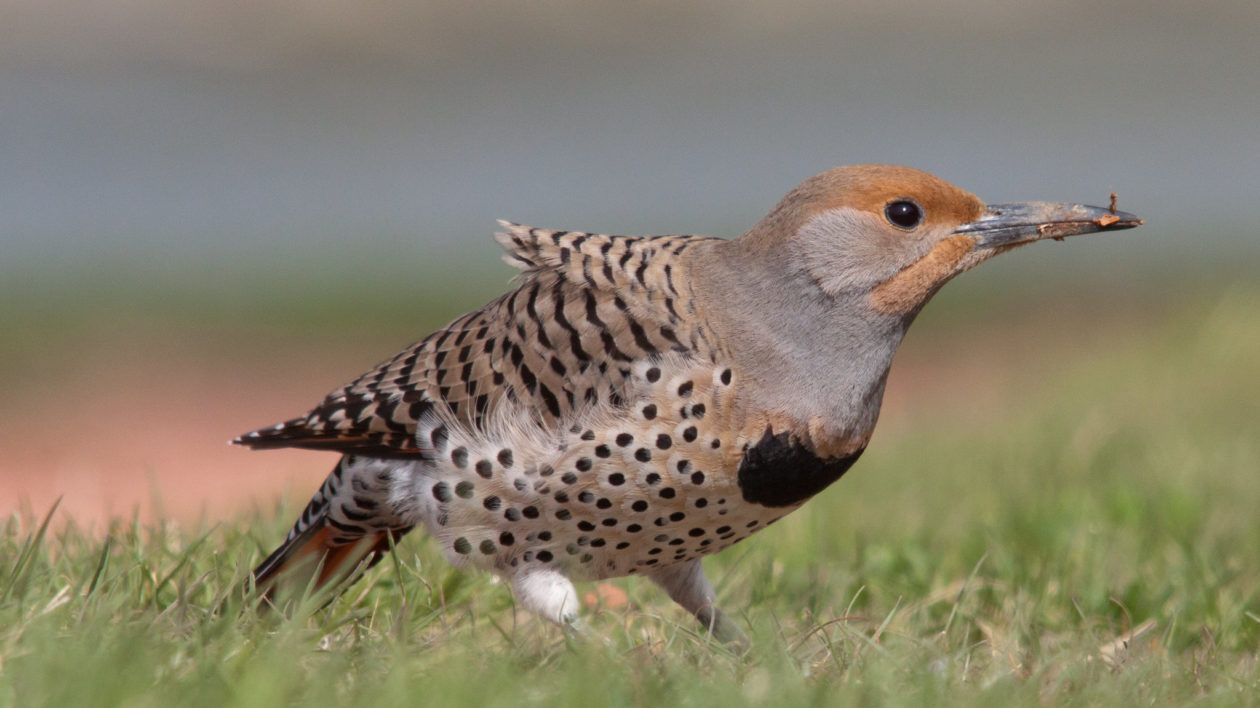
How to Host Flickers Without Damaging Your Property
With all their knocking and rolling, flickers are an entertaining bird worth watching, but not worth losing your house for. Insect control is a plus so invite them for that, but limit where they can carry on.
Some people hang balloons or pinwheels in their eaves, but flickers know a fraud when they see the same one for a few days so those don’t deter permanently. Exclusion works best, meaning make the hot spot inaccessible. Hardwood cloth or bird netting should keep them off your house, but let them have the anthill in your yard. A rolling bird never gets old.
Also add a thin piece of balsam to your yard décor. It gives flickers somewhere, other than your house, to channel their pecking drive. Install a few flicker boxes too. Keep them dry and full of woodchips. A ramped up woodpecker will excavate a full box for hours, much to your backyard bird watching delight.
“Flickers are comical,” Anderson says. “To me, they are the court jesters of the bird world. They waka waka like Fozzie Bear on the Muppets and they are funny when they’re not damaging your house.”
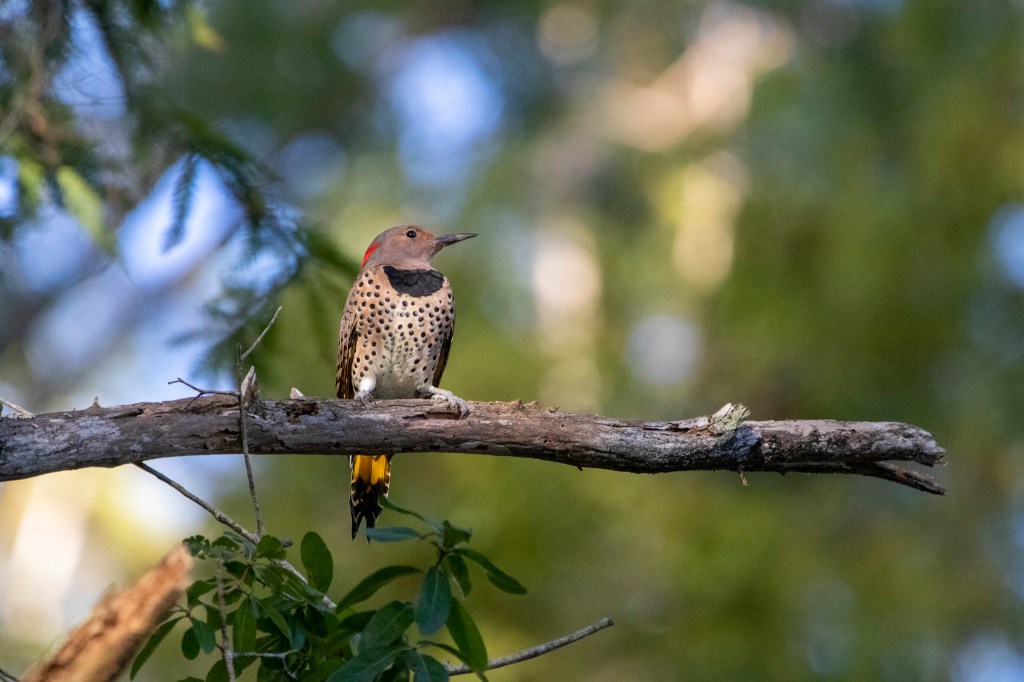



I LOVE this little woodpecker and will immediately grab my attention along with my other woodpeckers to alert me to check the suet feeder. I can’t tell you how many times I have been outside feeding my wildlife and heard the call from the black walnut tree.
Thanks for letting me know about the ant behavior. I’ll have to pay closer attention the next time I see them on the ground.
Fascinating piece, Kris. I’ve been interested in flickers since rescuing one as a kid, but you still taught me a thing or two about them. We even named the newsletter of the Grand Gulf Audubon Society “The Flicker” and incorporated their beautiful plumage into the group’s official logo.
Sadly, we have observed the complete disappearance of flickers from our feeders this winter. Has anyone else noticed this?
Wood peckers love our tasty rough-sawed cedar siding. Suet cakes seem to help by providing something tasty. We’ve had a long-standing battle with these guys. They once even pecked a very sizable hole in our house. I made up a sort of poultice with the hottest spices I could come up with & smeared it around the hole. Worked for awhile but they got used to it. Had to replace @ whole sheet of siding.
Please let me know where I can find instruction for building a Flicker box.
Great article!